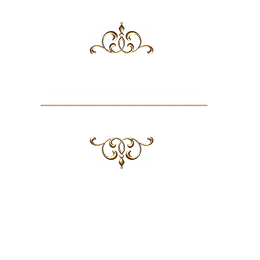CONTACTS
+48883888495 ( whatsapp )
Warsaw Poland
+44 7367 899 788 (Telegram)
United Kingdom, London
+375 44 7484847 (Viber)
Belarus, Minsk
France, Nice, Paris
Email: antiinterior888@gmail.com
antinteriordevelopment@ Gmail.com
Websites: antinterior.com
antinteriordevelopment.com
Opening hours: 10:00 - 19:00

Content Oriented Web
Make great presentations, longreads, and landing pages, as well as photo stories, blogs, lookbooks, and all other kinds of content oriented projects.
Renaissance style in the interior.
An article from the Book "Interior Styles with Tatyana Antonchenko" is a large encyclopedia of interior and architectural styles.
Leave your Email
Please leave your details to continue reading.
We do not send unwanted emails
You agree to the Terms of use of your personal data and с Privacy Policy
You agree to the Terms of use of your personal data and с Privacy Policy
Renaissance style 15th-16th centuries.
The new style, called the Renaissance style by contemporaries, introduced a new spirit of freedom and faith in the limitless possibilities of man into the art and culture of medieval Europe. Man is the creator of beauty and freedom. Large rooms with rounded arches, carved wood trim, an abundance of details from which the whole is typed.
The main elements of the style are pilaster, column, pylon, archivolt and architrave. The order system of the Renaissance style successfully combines various combinations made up of these elements. Orders are usually lined up in a classical subordination. The heavy Doric order is placed at the bottom, and the lightest Corinthian order is at the top. At the same time, the walls again acquire tectonic significance.
The Renaissance is characterized by rationality and clear boundaries. No more broken lines. The lines become strict and, as a rule, rectangular. The Renaissance welcomes simple geometric shapes: the ball, the cube, the rectangle, and the square.
Since the Renaissance style originated in Italy, in the Middle Ages, architects brought up on Italian models were invited to build gardens, palaces and other structures. Renaissance architects were able to create the environment that satisfied noble people with the opportunity to engage in art, music and literature.
Colors: soft and light, dark and gloomy, sonorous and saturated; cold shades of white and bed scales.
From materials: black and white wood (oak, walnut, exotic species), ivory, stone, marble, sandstone.
Finishing with carved wood (ebony, oak, walnut, exotic species). Ivory, stone, marble, sandstone. Marble stairs, floors, walls. Ornament from antique samples. Various columns, pilasters, acanthus leaves, candelabra, cupids, grotesques, arabesques, braids, cartouches, festoons, garlands, lion heads, griffins, etc.
Renaissance furniture is all about clarity of design and lines. Furniture of a clear form with architectural elements, like a palazzo with columns, pilasters, cornices, pediments. Item No. 1 - bed (on a hill),
No. 2 - chest-cassone (with carving and painting).
2 types of tables: rectangular with a thick top on 2 supports; central (round, 6, 8-angled) on one support.
Venetian furniture, cabinet furniture.
Furniture is made of wood or metal. Popular gilding. Cabinets and surfaces of other furniture are decorated with a relief pattern in the antique spirit.
For interior design in the Renaissance style, the floors should be made of natural stone or wood. Instead of natural stone, today it is rational to use porcelain stoneware or ceramic tiles that imitate marble or other natural stone.
The ceilings are high, made in the form of vaults. For interior design in the Renaissance style, multi-level ceilings with a picture or ornament in the center, made in the spirit of antiquity, are great.
Renaissance style walls are smooth natural stone, marble, sandstone and stucco. It was during the Renaissance that decorative plaster began to be actively used to decorate walls, which usually covered only one of the walls. Today it is convenient to use ceramic tiles or modern plaster that imitates the surface of marble.
The walls in the Renaissance style are characterized by the presence of niches decorated with paintings or frescoes. Bronze figurines look impressive in such niches.
A bath in the Renaissance style can be made of cast iron, with massive gilded legs, preferably with artistic forging. Faucets and showers must be selected in a classic form of bronze or gilded color.
Renaissance decor items include antique paintings, aged furniture in this style, wrought iron furniture, ivory accessories, candelabra, cassone chests (decorated with carvings, inlays or paintings) will help to embody the Renaissance style. Of course, one cannot do without candelabra, massive, perhaps even forged.
The Renaissance still amazes us with spatial effects, stone design elements, wall paintings and lack of contrast, giving harmony and tranquility.
Continuation of the review of interior styles follows ...
Certificate of Publication No. 34070
When reprinting and quoting an article, the author's indication and an active link to the page are required!
Thanks to me and the sources for the information
Sincerely yours, Tatyana Antonchenko
When reprinting and quoting an article, the author's indication and an active link to the page are required!
Thanks to me and the sources for the information
Sincerely yours, Tatyana Antonchenko



